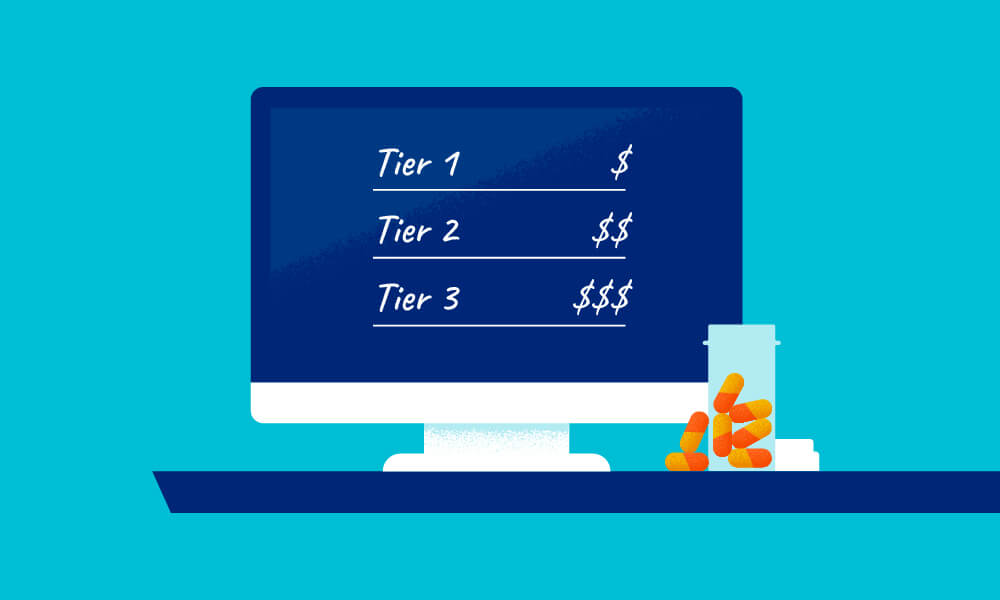

A formulary is a list of covered drugs. Each Medicare Part D prescription drug plan and Medicare Advantage plan (Part C) that includes drug coverage has a formulary. Each plan determines which specific drugs it will include on its formulary. Formularies include both brand-name and generic drugs, and they must include most types of drugs used by Medicare beneficiaries. You can typically find a plan’s formulary with the plan’s other documents and details.
A tiered formulary divides drugs into groups based mostly on cost. A plan’s formulary might have three, four or even five tiers. Each plan decides which drugs on its formulary go into which tiers. In general, the lowest-tier drugs are the lowest cost. Plans negotiate pricing with drug companies. If a plan negotiates a lower price on a particular drug, then it can place it in a lower tier and pass the savings on to its members. The table below is an example of a four-tier formulary structure.
| Drug tier | Type of drugs included | Your cost |
|---|---|---|
| Tier 1 | Most generic drugs | Lowest copay |
| Tier 2 | Most common brand name drugs Preferred brand name drugs Some high-cost generic drugs | Medium copay |
| Tier 3 | Non-preferred brand name drugs | Highest copay |
| Tier 4 (Specialty Tier) | Unique or very high-cost drugs | Percentage of total drug cost, called “coinsurance” |
Formularies vary. Every plan creates its own formulary structure, decides which drugs it will cover and determines which tier a drug is on. One plan may cover a drug that another doesn’t. The same drug may be on tier 2 in one plan’s formulary and on tier 3 in a different plan’s formulary. Formularies change. A plan may add or remove a drug from its formulary or move a drug into a different tier. Usually, plans must inform members in advance if a drug is to be removed.
Formularies have different pricing. Plan members typically pay a copay or coinsurance each time they fill a prescription. How much you pay depends on the plan you have. Two plans may cover the same drug, but the cost may be different.
It’s important to research and compare plans to make sure your prescription drugs are covered at a price you are comfortable with.